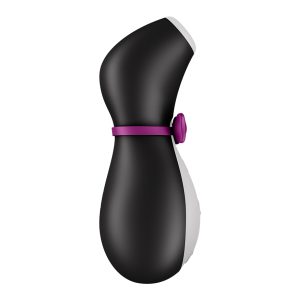The Penguin Satisfier: Unveiling the Secrets of these Flightless Birds
Penguins are among the most remarkable and charming creatures in the animal kingdom. With penguin adult toy TOPS Adult Toys and white feathers, waddling gait, and charming expressions, it is not surprising that why penguins have actually captured the hearts of many individuals worldwide. But what makes penguins so special? What are their routines, habitats, and characteristics that set them apart from other birds? In this article, we will dig into the world of penguins and explore the concept of a "penguin satisfier"-- a term that describes the things that make penguins delighted and satisfied.
Environment and Distribution
Penguins are discovered in the Southern Hemisphere, with the majority of types residing in Antarctica and the surrounding islands. They likewise inhabit the coastlines of South Africa, Australia, and South America. Penguins reside in a range of environments, consisting of rocky shores, ice sheets, and even deserts. Each types of penguin is adapted to its particular environment, with unique feathers, beaks, and flippers that allow them to survive and flourish in their particular environments.
Attributes and Behavior
Penguins are flightless birds, which means they are unable to fly like most other birds. Instead, they utilize their wings to swim and dive in the water. Penguins are exceptional swimmers, with some types reaching speeds of as much as 25 miles per hour in the water. They are likewise highly social animals, residing in colonies and taking part in complex interaction behaviors.
Penguins are known for their distinct calls, which they use to interact with each other. Each species of penguin has its distinct call, which can vary from a basic chirp to a complex series of noises. Penguins also utilize body movement to communicate, with raised plumes and aggressive posturing indicating threats or courtship habits.
What makes a Penguin Satisfier?
So, what makes penguins pleased and satisfied? Here are some things that are understood to bring happiness to these charming birds:
- Food: Penguins love to consume, and their favorite foods are fish, krill, and squid. A penguin satisfier would consist of an abundance of these tasty deals with.
- Swimming: Penguins are excellent swimmers, and they invest the majority of their time in the water. A penguin satisfier would include a lot of opportunities for swimming and diving.
- Social interaction: Penguins are extremely social animals and take pleasure in the business of others. A penguin satisfier would consist of time with loved ones, along with chances for social interaction.
- Nesting: Penguins are known to form long-lasting monogamous relationships, and numerous species develop sophisticated nests to raise their young. A penguin satisfier would include a relaxing nest and a caring partner.
- Play: Penguins are spirited animals and enjoy engaging in activities such as moving on their stubborn bellies and having fun with rocks. A penguin satisfier would consist of a lot of time for play and enjoyable.
Types of Penguins
There are 18 different species of penguins, each with its special attributes and habits. Here are a few of the most widely known types:
- Emperor Penguin: The biggest penguin species, reaching heights of approximately 45 inches and weighing as much as 90 pounds.
- King Penguin: The second-largest penguin species, understood for its distinctive yellow plumes and loud call.
- Rockhopper Penguin: A little penguin types with unique crests and red eyes.
- African Penguin: A medium-sized penguin species found along the coastlines of South Africa.
Conservation Status
Regrettably, many penguin types are threatened or endangered due to habitat damage, climate modification, and other human activities. The Emperor Penguin, for instance, is noted as near threatened on the IUCN Red List, while the African Penguin is listed as threatened. Conservation efforts are underway to secure penguin habitats and reduce the impact of human activities on penguin populations.
Often Asked Questions
Q: What is the typical life expectancy of a penguin?A: The average life expectancy of a penguin varies depending upon the types, but many penguins can live for between 15-20 years in the wild.
Q: Can penguins fly?A: No, penguins are flightless birds and are not able to fly.
Q: How do penguins communicate?A: Penguins interact utilizing a range of calls and body movement.
Q: What do penguins eat?A: Penguins mainly consume fish, krill, and squid.
Conclusion
Penguins are remarkable creatures that bring happiness and wonder to people around the globe. By understanding what makes penguins happy and fulfilled, we can work to secure and save these unbelievable birds. Whether it's offering an abundance of food, swimming chances, or social interaction, penguin satisfiers are necessary to guaranteeing the wellness and survival of these charismatic birds.
Extra Tips
Here are some additional tips for finding out more about penguins and how to support preservation efforts:
- Visit a local aquarium or zoo to find out more about penguins and their habitats.
- Donate to reputable preservation companies that work to protect penguin habitats and populations.
- Spread awareness about the value of preservation and the impact of human activities on penguin populations.
- Support eco-friendly and sustainable practices that minimize the impact of human activities on the environment.
By interacting, we can assist ensure the survival and well-being of penguins and the environments they inhabit.

